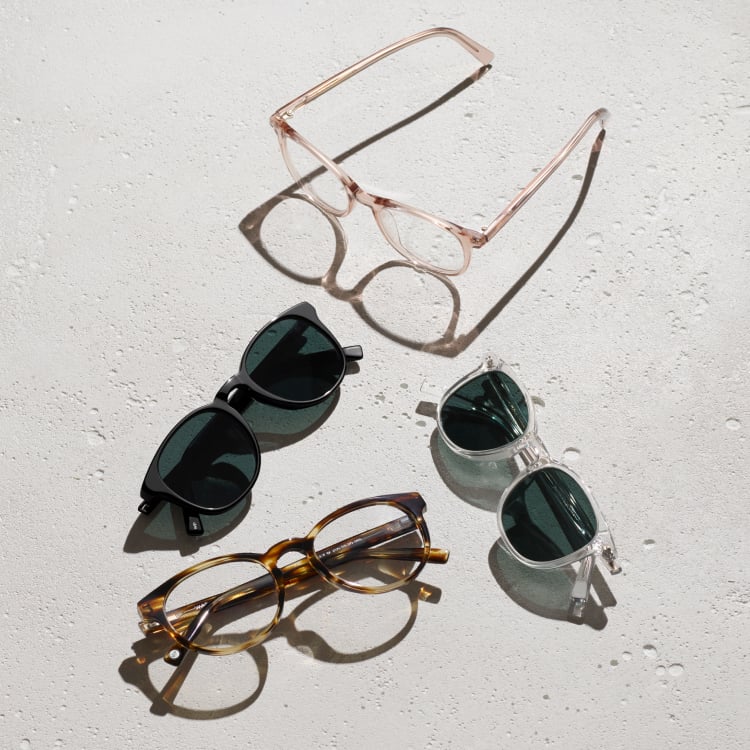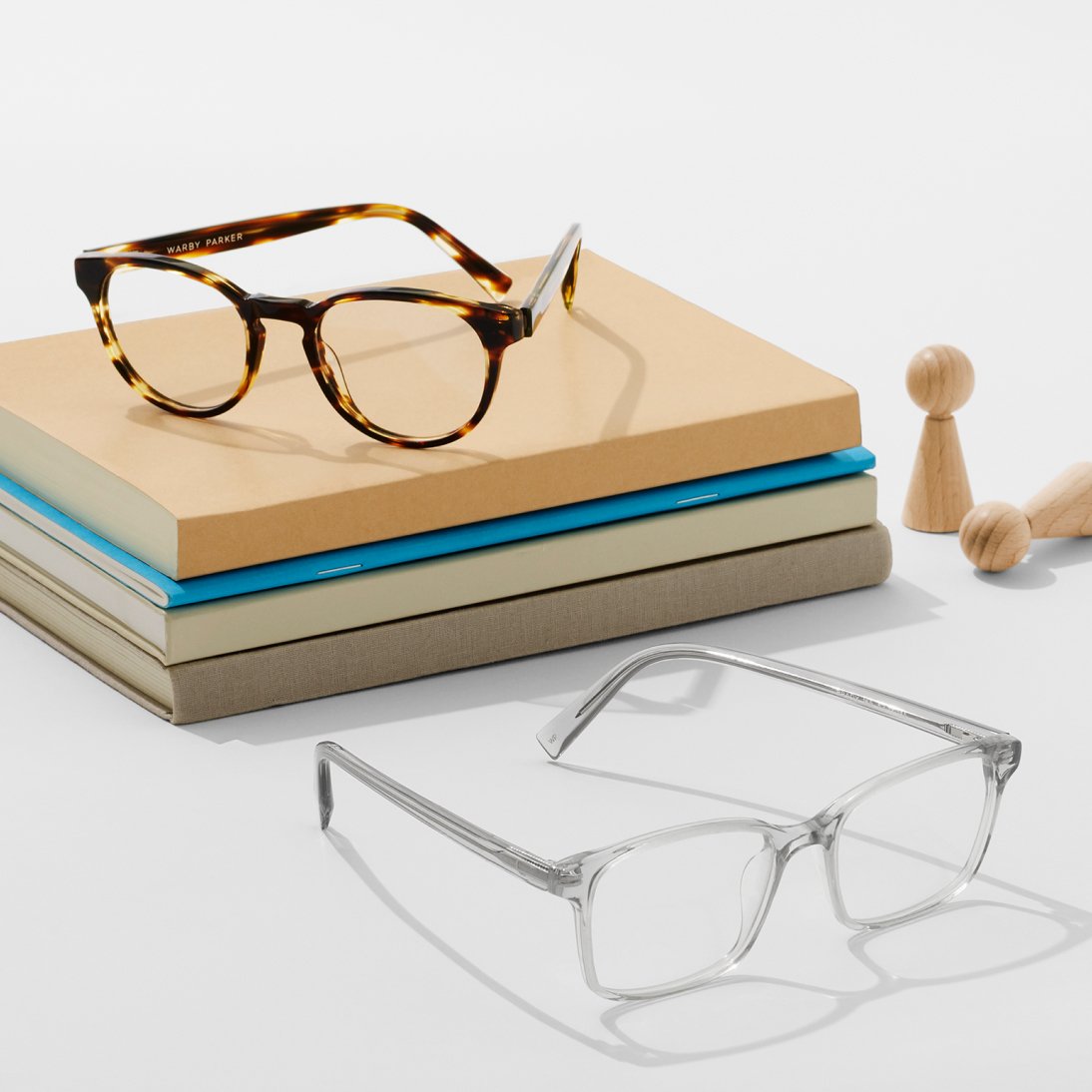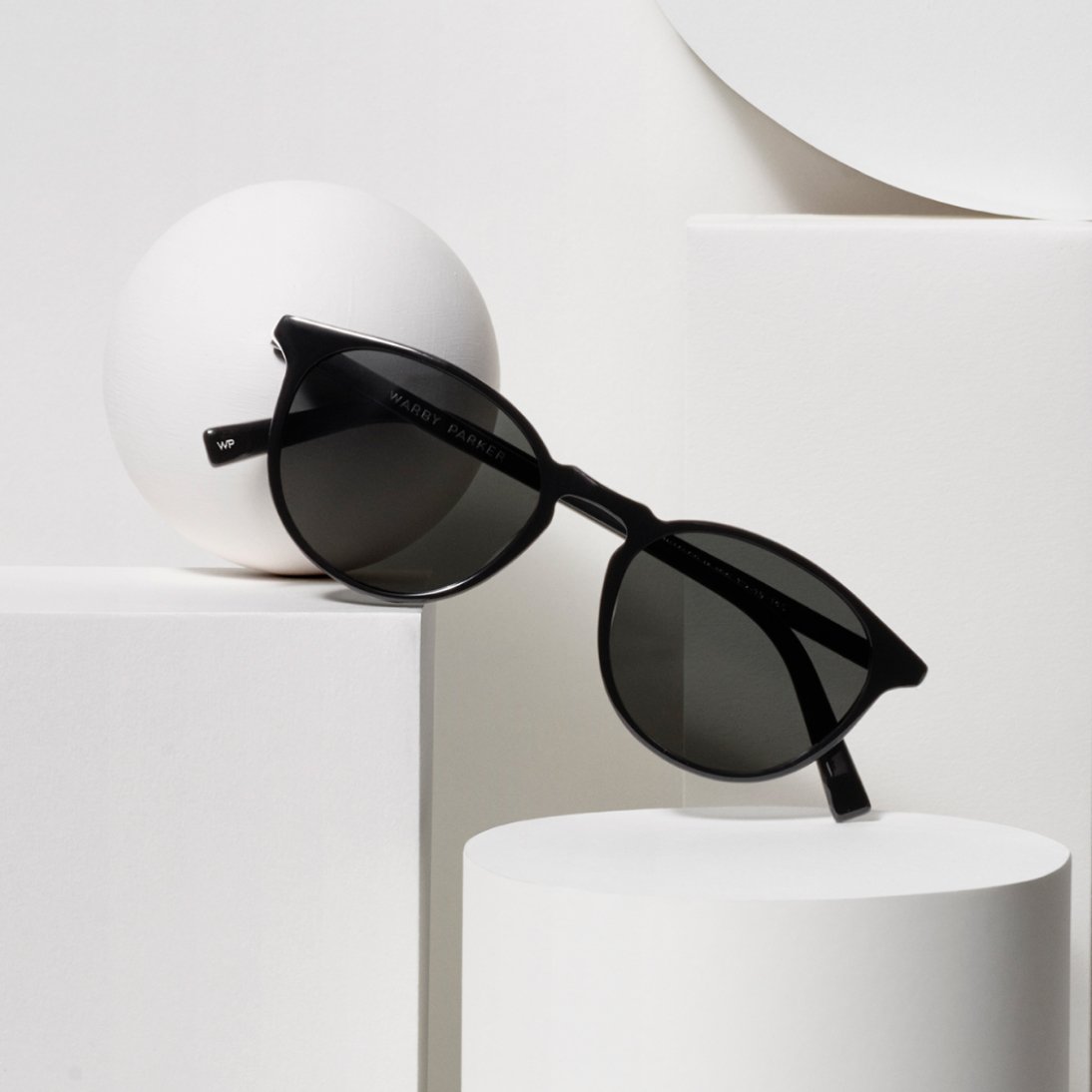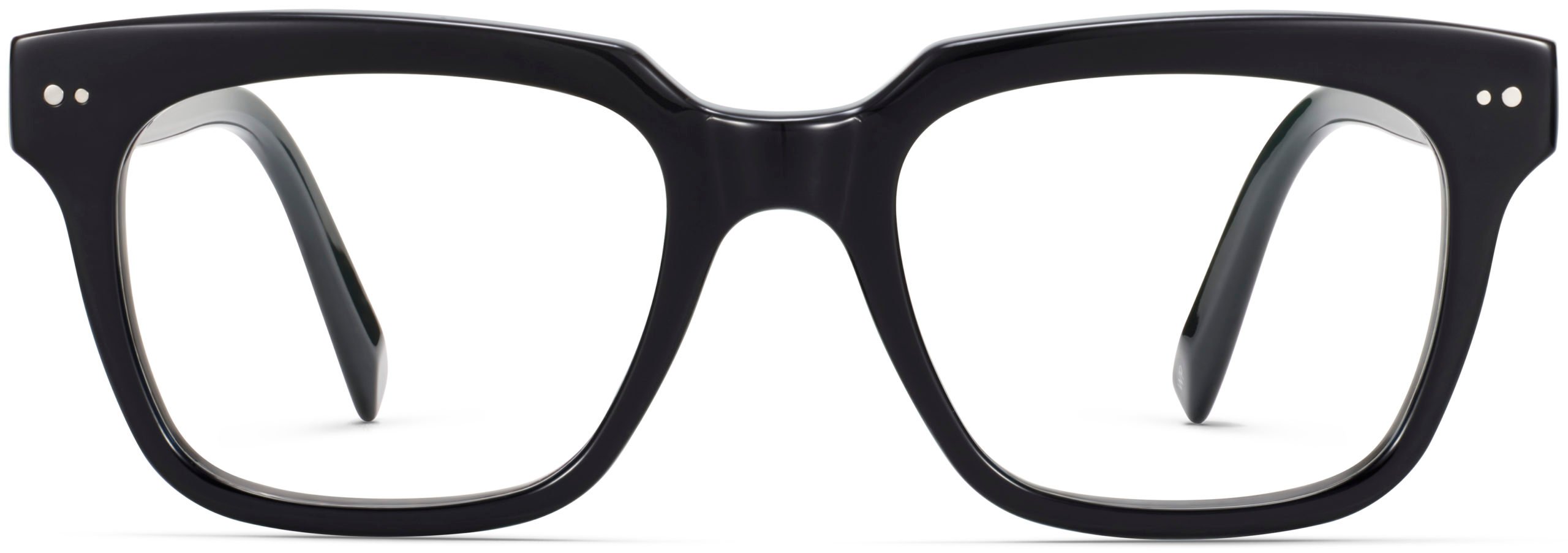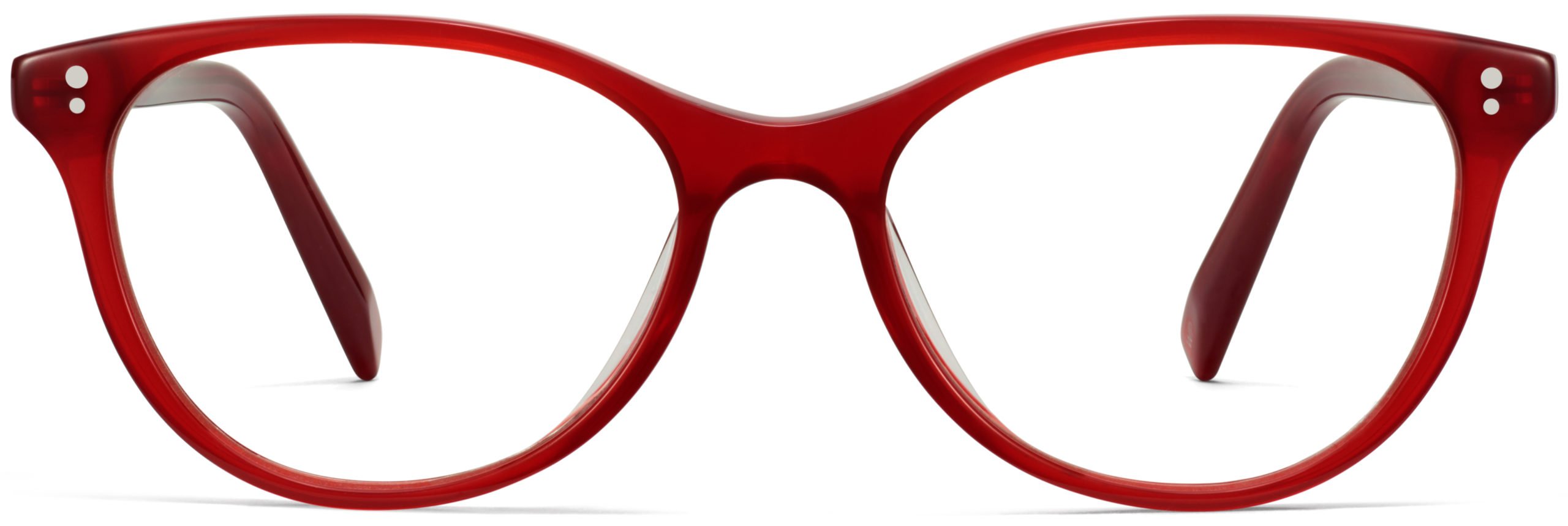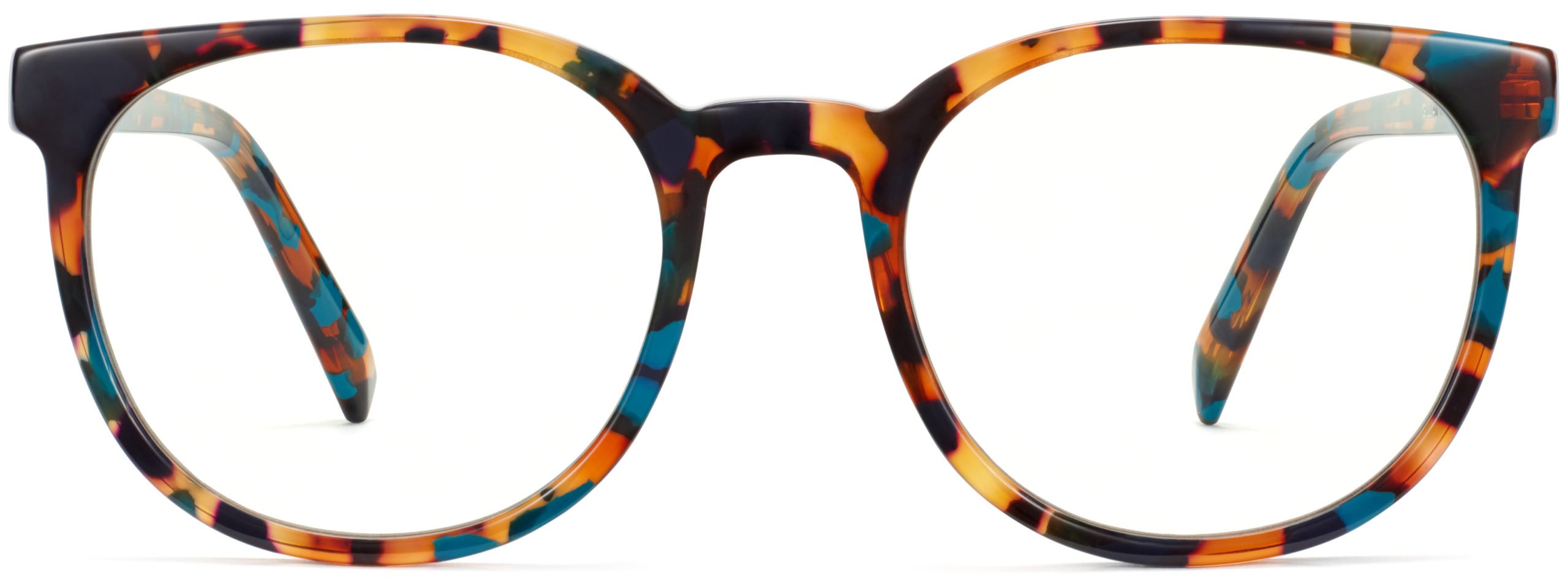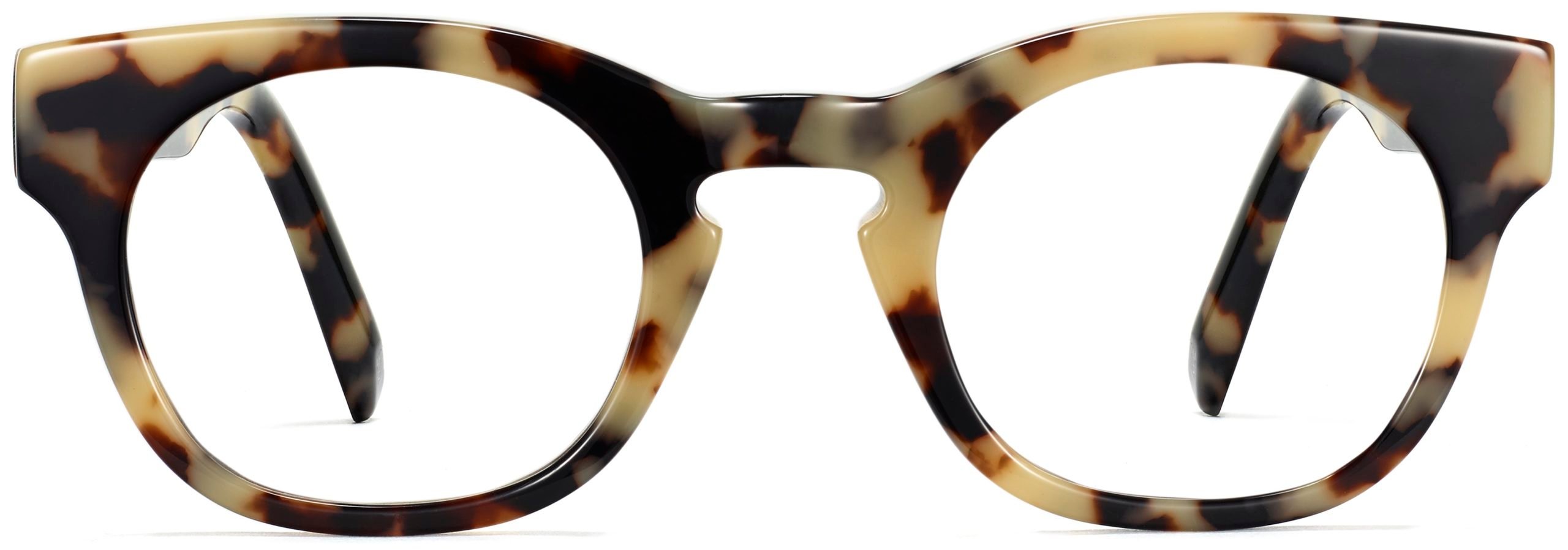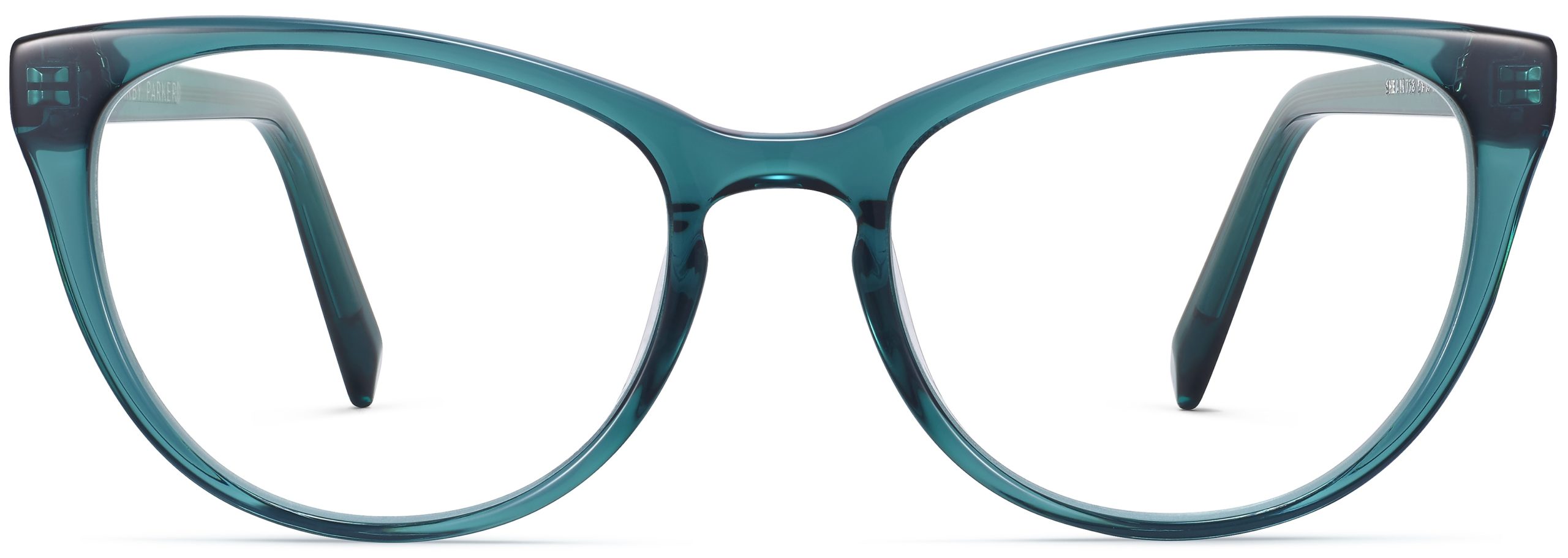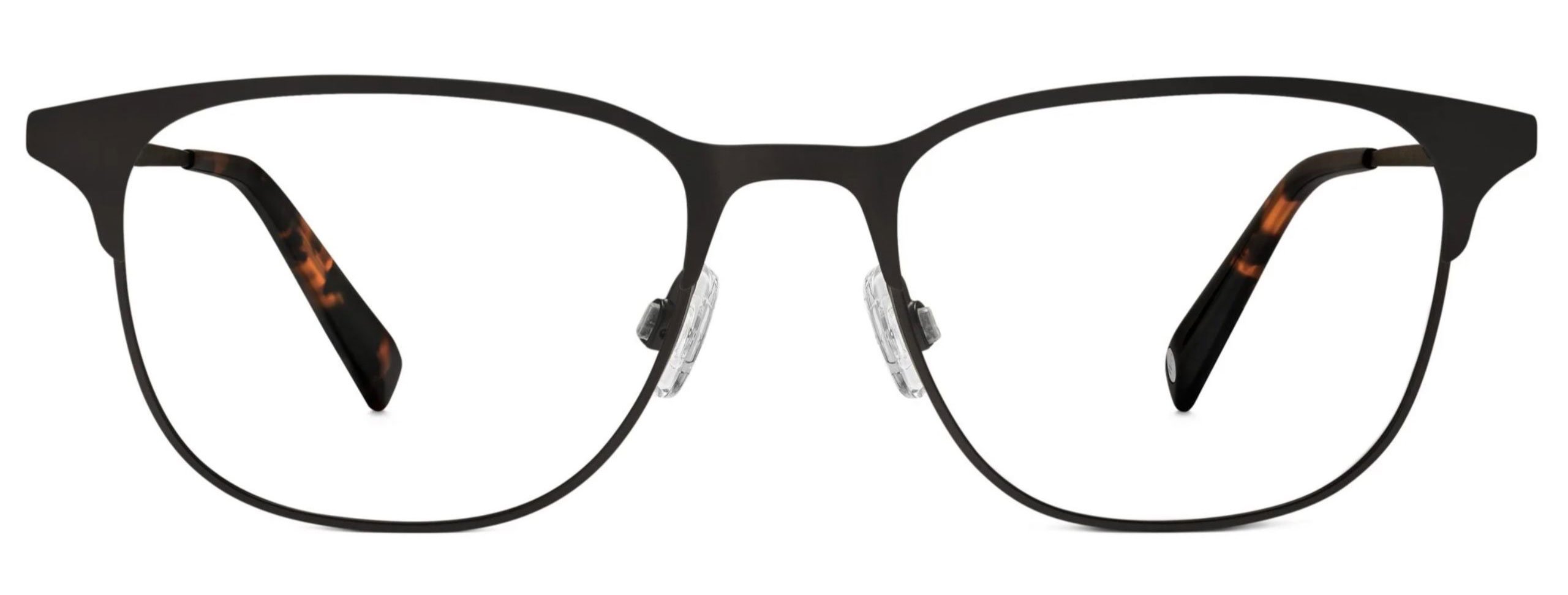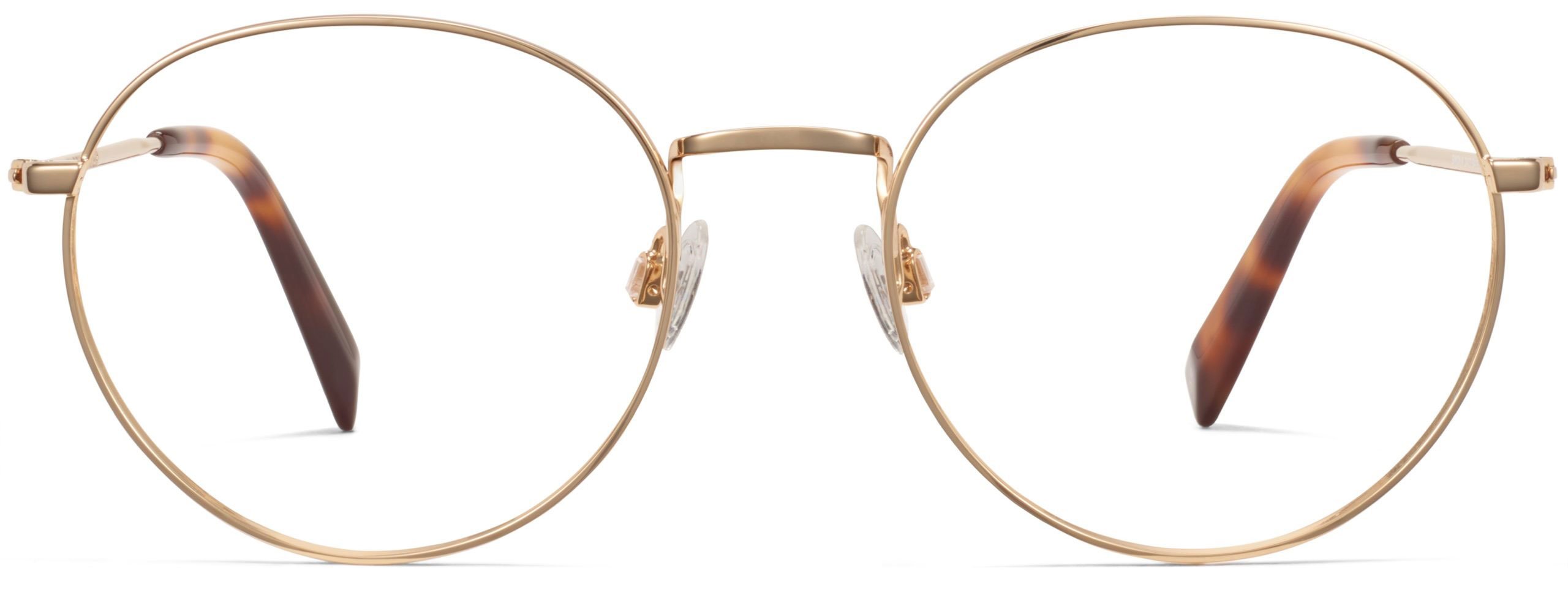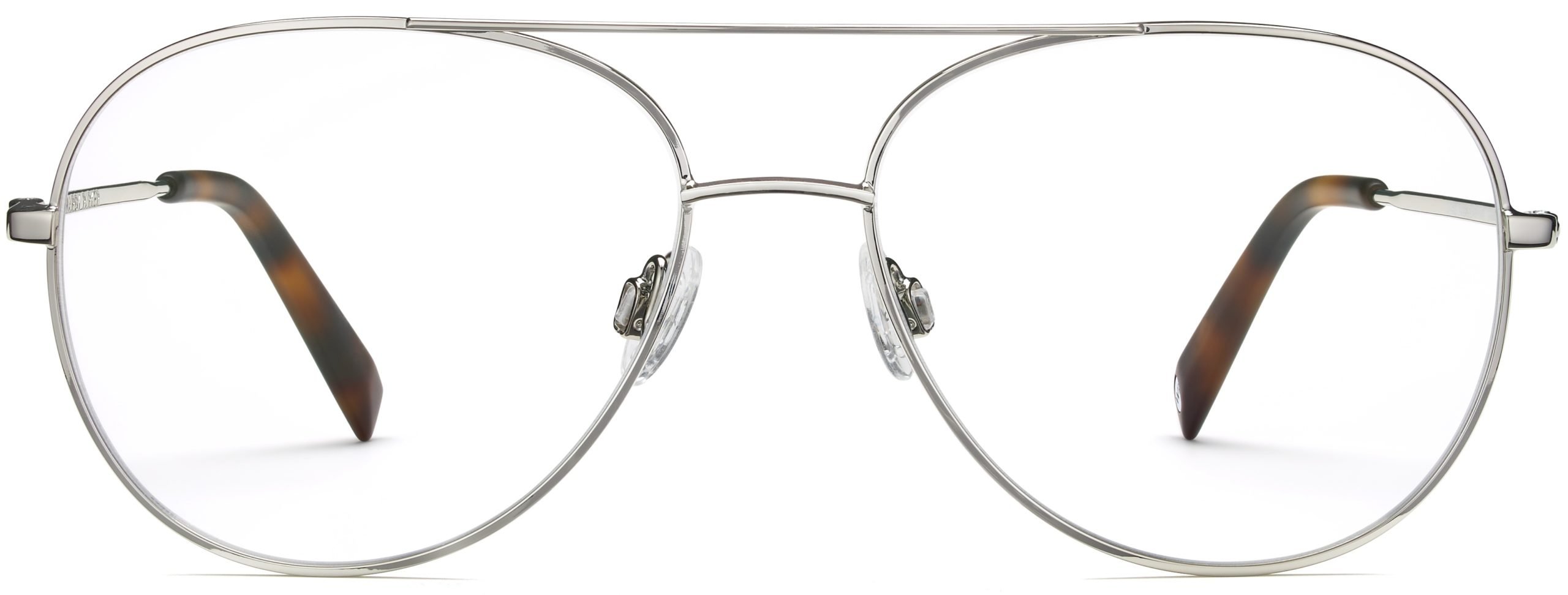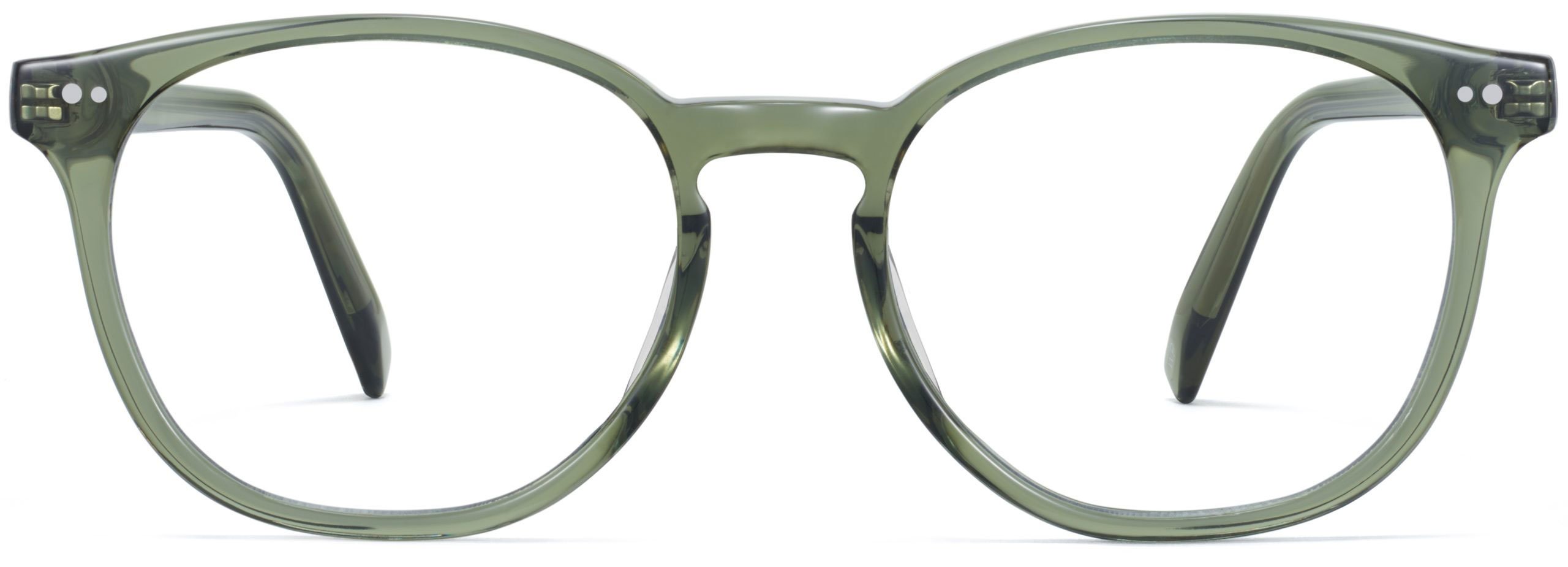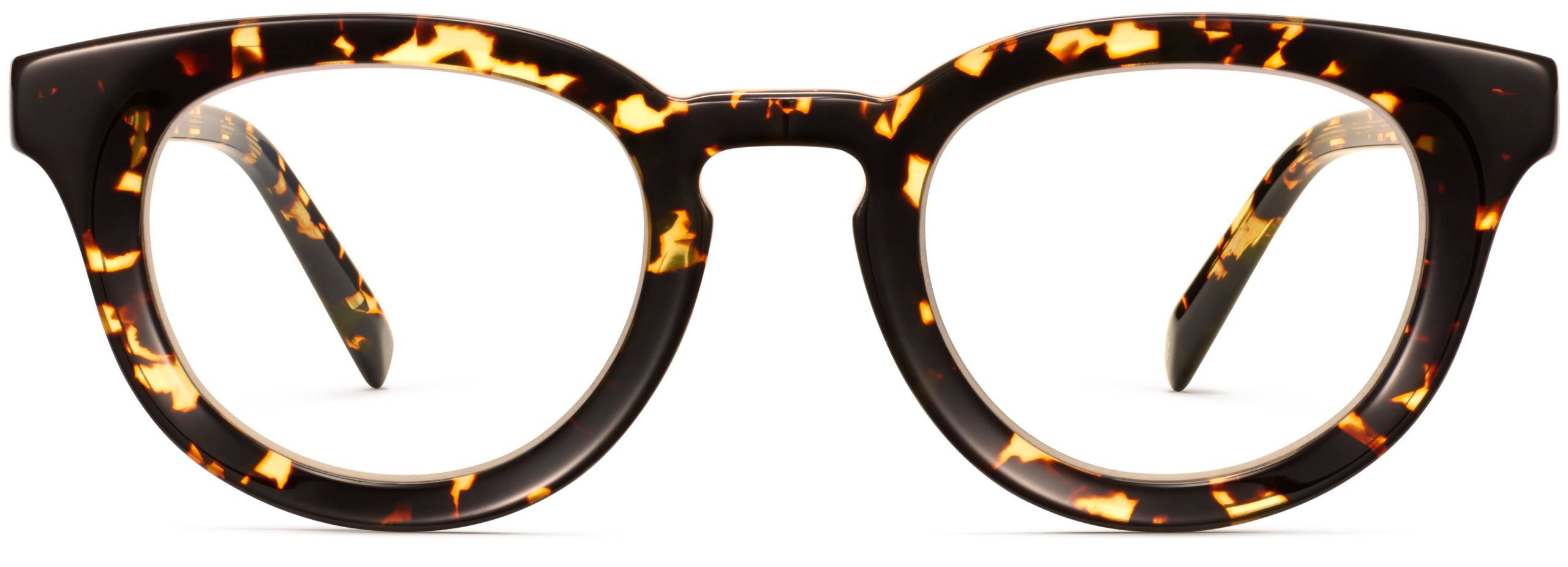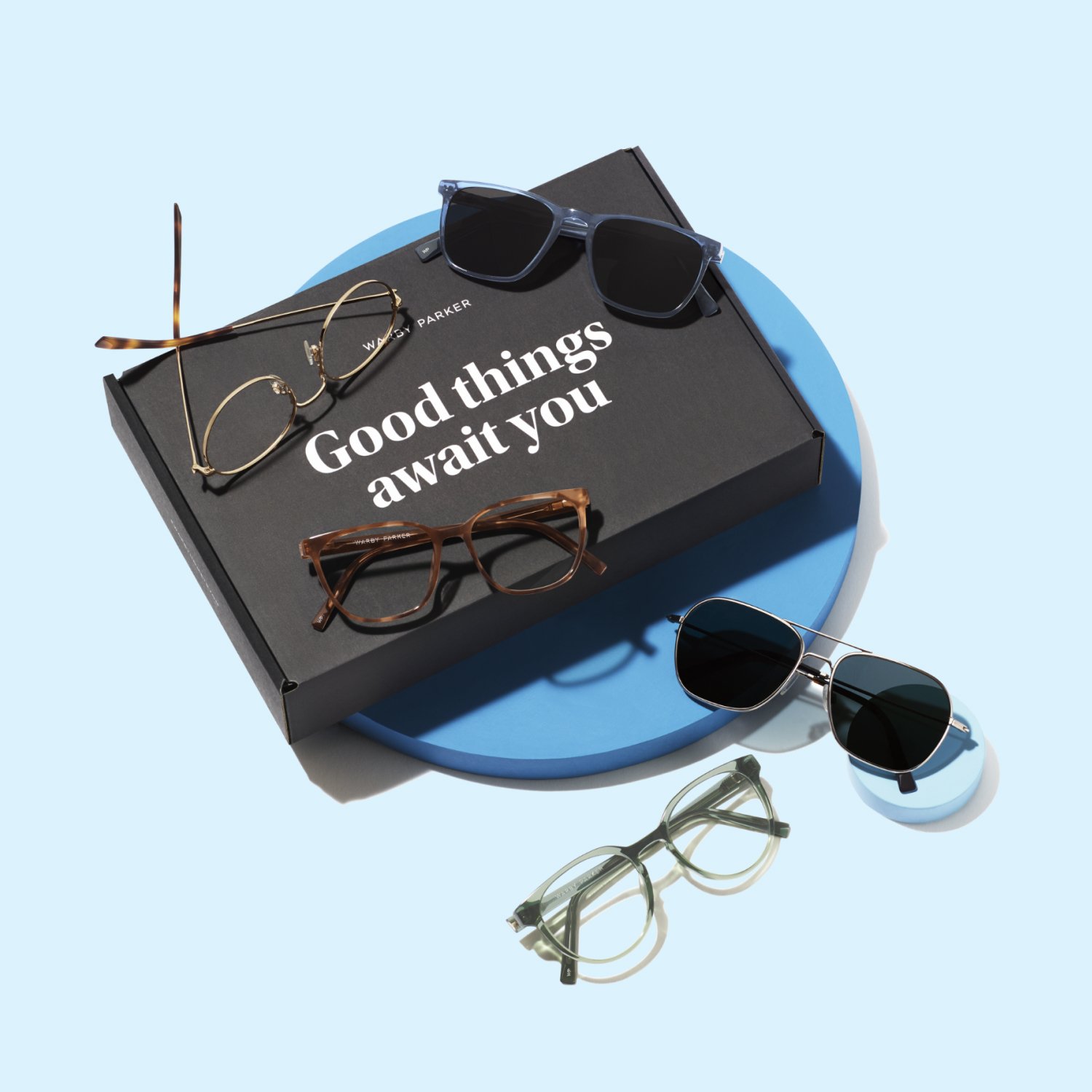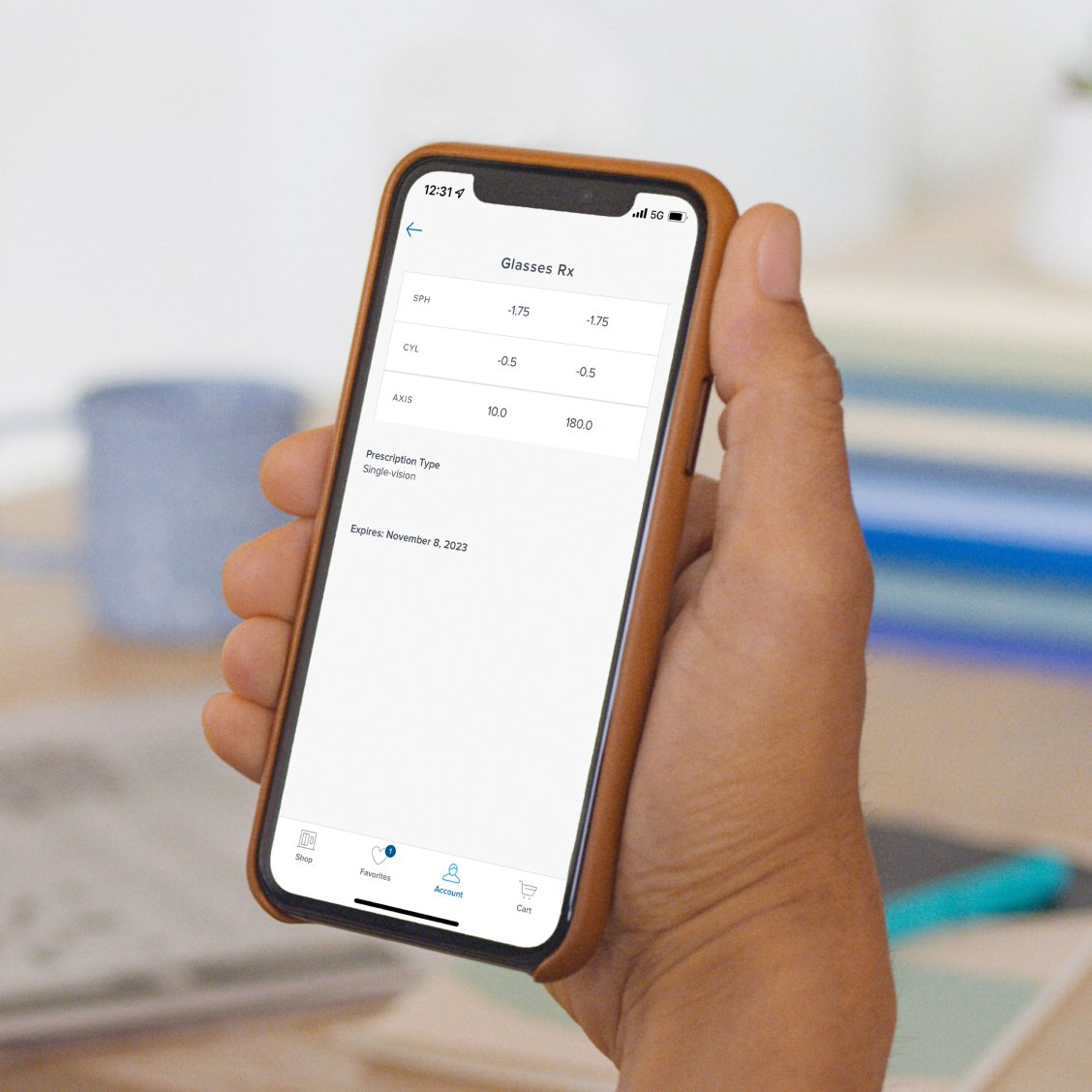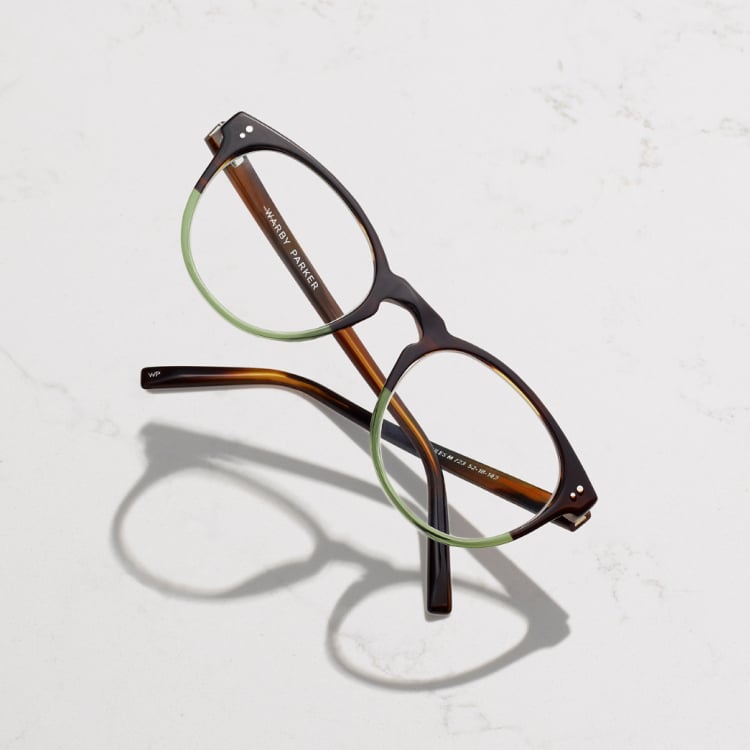A Guide to the Different Types of Glasses and Frames
At first glance, glasses may seem like simple accessories. They’re just some frames fitted with lenses that help you see better, right?
Well, not always! The world of glasses is its own animal kingdom, with different types of glasses and frames designed for an array of glorious purposes. Luckily, we’ve made a guide that will introduce you to all the kinds of glasses you may encounter.
Prescription Glasses
When people think of eyeglasses, their minds probably turn to prescription glasses first. These are the glasses with types of lenses that correct your vision, making it possible for nearsighted and farsighted folks to read, drive, and practice flawless archery.
Single-Vision
Single-vision glasses have lenses that correct your vision in one way across the entire lens. So, if you have a prescription for myopia (nearsightedness), a pair of single-vision glasses could help you see objects that are far away.
Bifocals
Bifocals are a type of multifocal glasses with lenses that are divided into two zones, and can correct your vision in two ways! Commonly, the top part of the lens allows you to see far away, and the bottom part allows you to see objects and read text closer to your face, with a distinct line between the two.
The different zones of a bifocal lens can be different shapes. Currently, a “flat top” design, with a semi-circle-shaped zone for near vision toward the bottom of the lens, is the most popular.
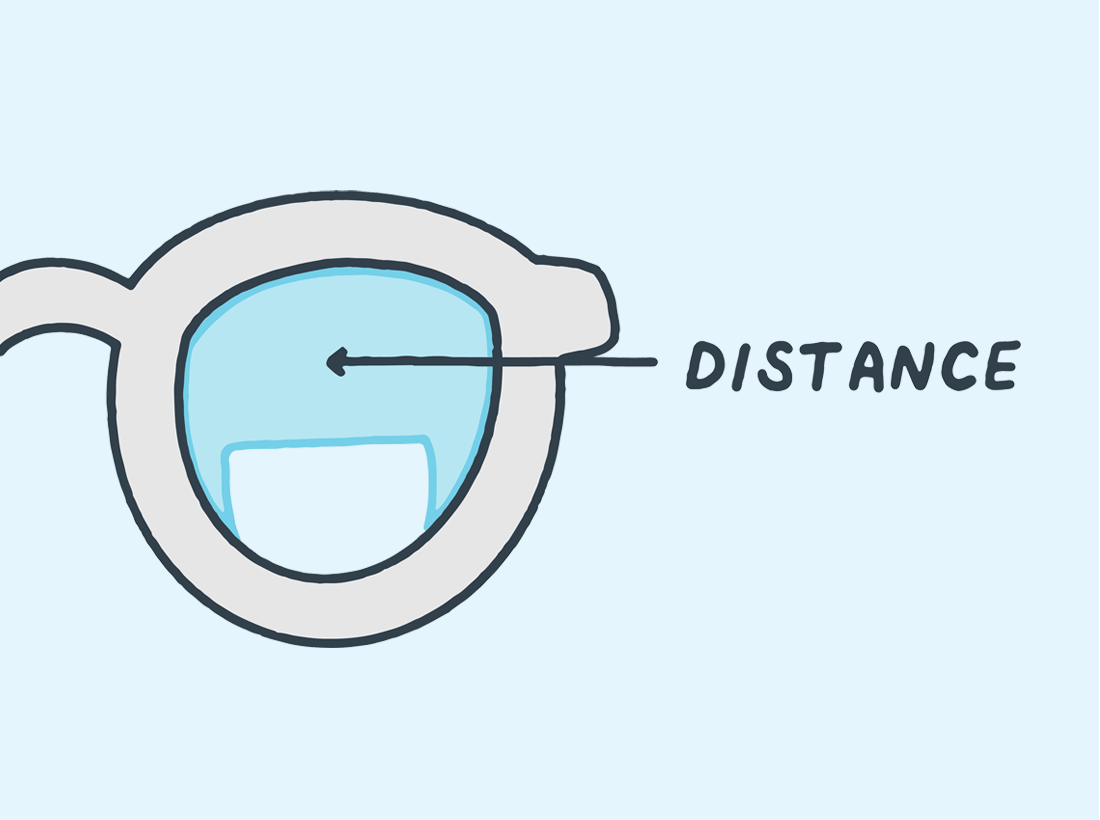
The different zones of bifocal lenses.
Trifocals
Are you sensing a pattern? Trifocals are multifocal glasses that have three distinct zones built into their lenses for different kinds of vision correction. In addition to the near-vision and distance-vision zones that bifocals have, they also feature a zone for intermediate distances, which helps you see objects approximately an arm’s length away. The zones are also separated on the lens by visible lines.
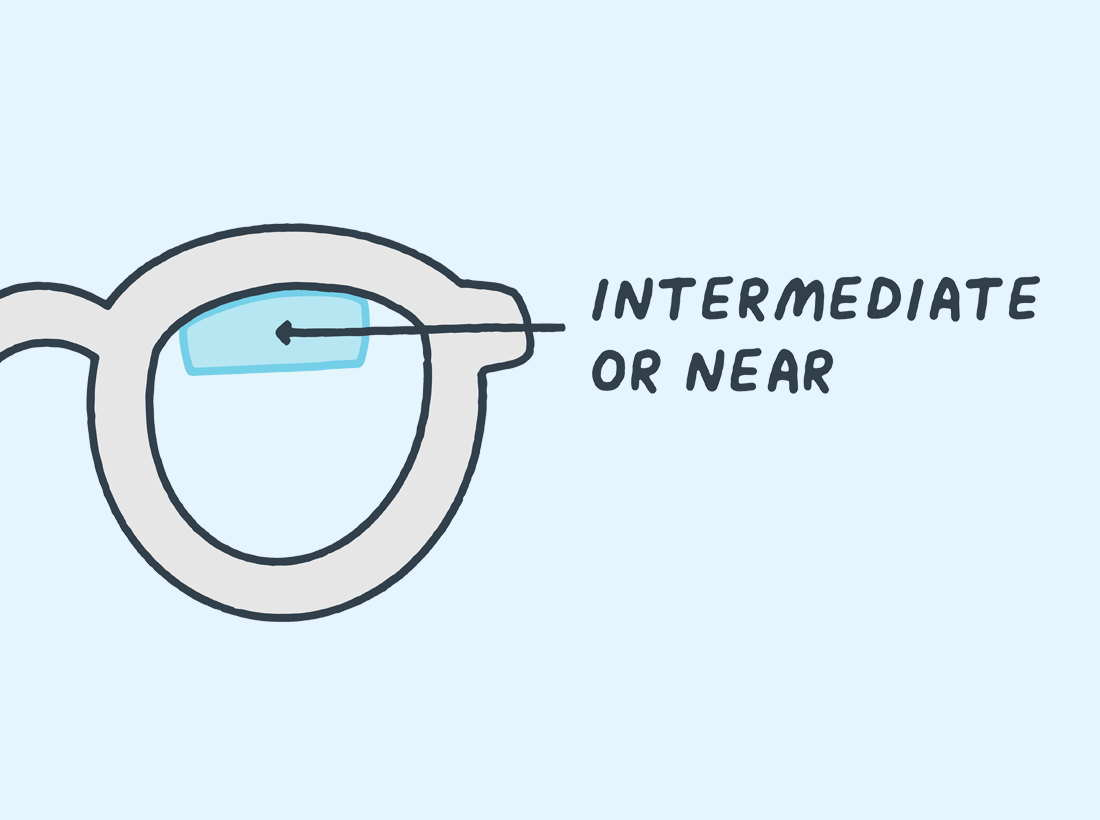
The different zones of trifocal lenses.
Progressives
Progressives are another kind of multifocal glasses. Like bifocals and trifocals, they contain more than one zone of vision correction. However, in progressive lenses, these zones transition into one another more seamlessly, rather than having a visible line or border between them. This gradient approach means that they can clear up vision as needed at almost any distance.
Read more: What Are Progressive Lenses?
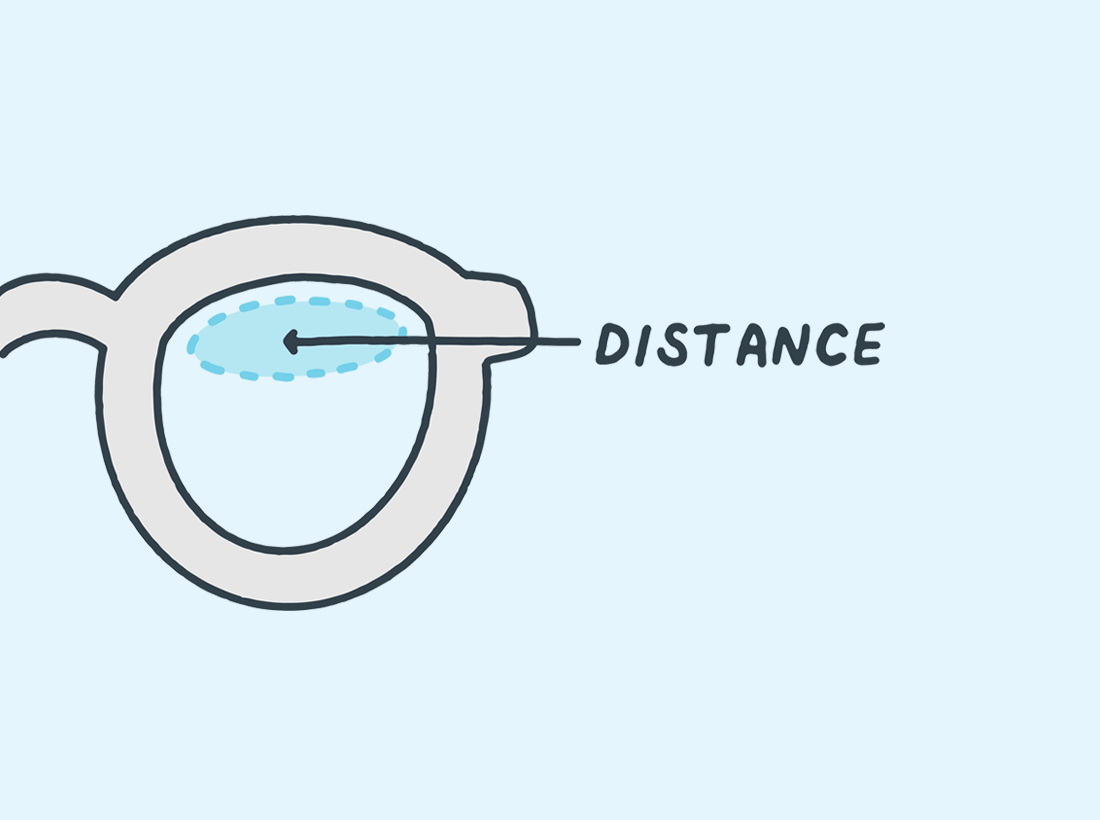
The different zones of progressive lenses.
Looking for prescription glasses?
No matter the distance (of vision correction needed), we’re here for you. Single-vision, progressive lenses, & more.
Non-Prescription Glasses
You don’t need to have difficulty seeing clearly in order to want or need a pair of glasses. Many people wear glasses without prescription lenses in them, whether it’s for style, safety, or just a smidge of additional magnifying power.
Reading Glasses
Reading glasses help offset the effects of presbyopia, which is the fancy medical term for the fact that the lens of your eye becomes thicker and more difficult for your eye muscles to move as you age. When your lens can’t focus light as easily, you have a harder time reading close-up text, so reading glasses have a slight boost in magnification (up to +2.75 diopters, in our case).
Non-prescription glasses
Sometimes referred to as fashion glasses, clear glasses, or (somewhat rudely) fake glasses, the lenses in these pairs have no prescription or magnification—they’re purely for the sake of lookin’ good. If you don’t need vision correction but want to wear glasses for the sophistication and style they provide, then this type of glasses is for you.
Did you know?
You can order our frames as readers or with non-prescription lenses at no additional cost.
Sunglasses
Sunglasses have lenses that are lightly or heavily tinted to make it easier to see in brightly lit conditions. There are many types of sunglasses, some with prescriptions or magnification built-in, some without—you’ll look intriguingly mysterious in them either way.
Many sunglasses also have polarized lenses, which reduce glare and enhance color contrast for even clearer vision. (Not to brag, but ours also block 100% of UVA and UVB rays.)
Bright out?
Sunny days have met their match.
Glasses for Digital Protection
A recent innovation, these types of glasses are meant to protect your eyes from the effects of heavy screen usage, most notably digital eye strain.
Computer Glasses
Computer glasses, like other kinds of multifocal glasses, have a zone of magnification installed in the lens that helps you focus on your computer screen. Typically, this zone targets an area about two feet away from your face.
Computer glasses can go by many other names, including anti-fatigue glasses, office glasses, workplace glasses, and intermediate glasses.
Blue Light Glasses
Also called blue-light-blocking glasses, these glasses filter out some of the blue light produced by screens and thereby prevent it from entering your eye.
Types of Glasses Frames
As the ever-important foundation, your frames bring the different parts of glasses into a beautiful marriage of style and function. There are several types of glasses frames, most of which describe the extent to which the frames wrap around the lenses. All of these frames come in a variety of measurements so that you can find the best fit for your face.
(Frame type is different from frame style—if you want to know the difference between cat-eye and geometric frames, for example, then take a look at our primer on glasses styles and shapes.)
Full-Rimmed Frames
Full-rimmed frames completely enclose the lenses for a bold, seamless look. The frames themselves might be thick or thin, colorful or monochrome—the only constant is that they go all the way around your eyes.
Semi-Rimless Frames
Semi-rimless frames typically don’t enclose the bottom portion of the lenses. They’re a bit more lightweight than full-rimmed frames, and smartly mimic the outline of natural eyebrows.
Rimless Frames
Rimless frames leave the lenses without any borders whatsoever. They’re the lightest option, but also the most fragile.
Low Bridge Fit Frames
Low Bridge Fit frames are designed for people whose nose bridge sits even with or below the pupils of their eyes. Our Low Bridge Fit frames have larger nose pads for increased comfort, slightly angled lenses that won’t sit directly on your cheekbones, and temples with a subtle arch that make for a comfier fit.
Glasses Frame Materials
Now that we’ve covered the types of glasses frames, you might be wondering what the heck they’re made out of. The short answer: probably metal, acetate, or a mix of both. The long answer: There are lots of different blends and subtypes of these materials that can go into a frame, with some being more popular than others.
Durable and commanding yet flexible and light enough to be shaped into thin lines, metal is a natural choice for glasses frames.
You’ll see fun names like Flexon and Monel when shopping for metal glasses—these are alloys or blends of metals. Titanium is another metal that glasses manufacturers often use, as it’s hypoallergenic and can be produced in a range of colors.
Acetate
Acetate frames are incredibly versatile when it comes to shape and color. They also allow for different kinds of finishes or glosses, and tend to be a bit more affordable than frames made of other materials.
Acetate is a plant-based (instead of petroleum-based) plastic that’s not only extremely durable, but also quite flexible, allowing the frames to adapt to a wearer’s face over time.
We make our frames from acetate—want to watch the process? See how our glasses are made.
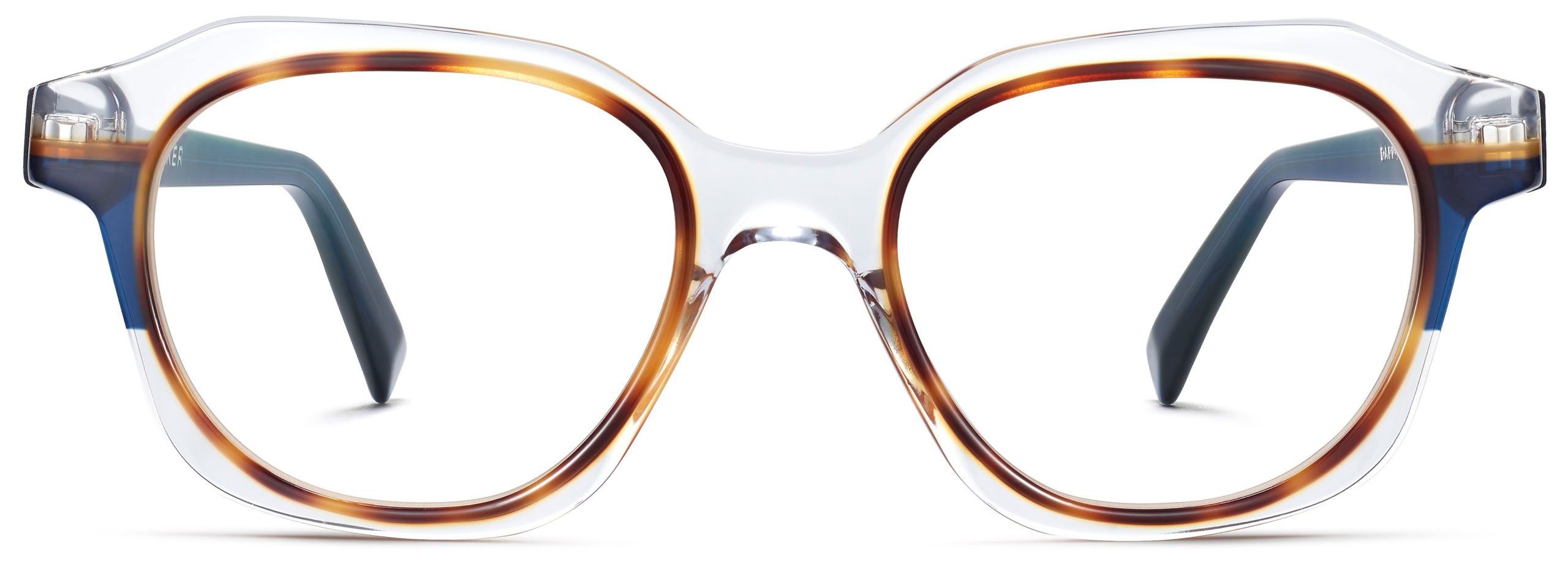
Darrow
Crystal with Oak Barrel and Blue Bay
Shop Darrow
Other Glasses Frame Materials
If you can shape, whittle, or 3D-print a material, chances are you can make glasses frames out of it. People have worn glasses made of precious metals, wood, horn, and even bone. These materials usually aren’t as long-lasting or strong as metal and acetate, however.
The Best Type of Glasses is the Type that Makes You Smile in the Mirror
When you’re shopping for eyewear, you can use this article as a basic guide to the types of eyeglasses and frames—but the most important aspect of your glasses is how you feel and look with them on. No matter what category they fall into, they should be comfortable, confidence-boosting, and easy on the eyes (yours in particular).
Considering contact lenses? Check out our guide comparing the pros and cons of contacts vs. glasses.

